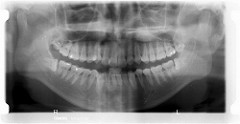
Wisdom teeth, or third molars, are the last teeth to come in during young adulthood. It is easiest to remove wisdom teeth when the patient is a young adult (late teens to early twenties) because the roots are not fully developed. Wisdom teeth are removed to correct a problem or prevent a problem in the future. The way in which the teeth are growing in determines whether or not a person needs to have them removed, but not all people need to have their teeth removed. It is possible to never have to remove wisdom teeth or to only have to remove one. Wisdom teeth removal can be done by your general dentist or an oral surgeon in office as an outpatient procedure.
Reasons to Remove:
Extraction Process
During the removal process, your dentist/surgeon will use a local anesthetic to numb the area around where the tooth will be extracted. When dealing with multiple tooth extractions you will be placed under general anesthesia, causing your whole body to be asleep during the procedure. In most cases the removal of the teeth goes very smoothly: the dentist opens up the gum tissue around the tooth and pulls the tooth out. Sometimes the tooth is harder to extract and the dentist must break the tooth into pieces to extract it piece by piece. After the tooth is removed, the dentist will stitch up the gum with dissolvable stitches.
Recovery
The recovery process generally only lasts a few days, which includes taking the pain medicine prescribed, rinsing mouth out, and using the gauze to absorb all the excess blood. In order to minimize the pain, try using an ice pack on the outside of your cheek/cheeks. Apply the ice pack for 15-20 minutes at a time for the first 24 hours, after the first day use a warm wrung-out towel for the next few days. Contact your dentist or surgeon if the pain begins to get worse around the fourth day, which may be a sign of complications.